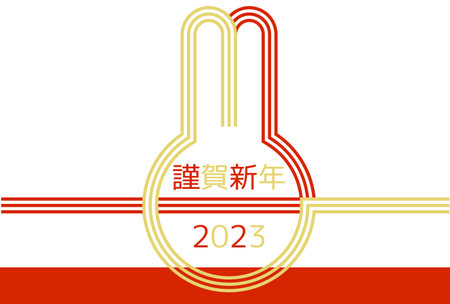1. What is Feng Shui? A Brief Overview
Feng Shui (pronounced “fung shway”) is an ancient Chinese practice that focuses on harmonizing individuals with their surrounding environment to promote well-being, prosperity, and balance. The term literally means “wind” (feng) and “water” (shui), two natural elements that are essential for life and symbolize the flow of energy, or chi.
Origins of Feng Shui
Feng Shui has roots dating back over 3,000 years in China. Originally, it was used to determine the best locations for homes, tombs, and important buildings by observing landforms and weather patterns. Over time, the practice expanded to include interior spaces, focusing on how the arrangement of objects and spaces affects the flow of energy.
Key Concepts in Feng Shui
To better understand Feng Shui, let’s break down its key concepts:
| Concept | Description |
|---|---|
| Chi (Qi) | The vital energy or life force present everywhere; positive chi brings health and prosperity. |
| Yin and Yang | The dual forces of nature; Yin is soft and passive, Yang is bright and active. Balance between them creates harmony. |
| The Five Elements | Wood, Fire, Earth, Metal, Water—each element interacts with others to create cycles of growth or control. |
| Bagua Map | An energy map used to analyze how different areas of a space correspond to aspects like wealth, health, and relationships. |
The Evolution of Feng Shui in the United States
While Feng Shui began as a traditional Eastern philosophy, it gained popularity in the United States during the late 20th century. Americans were drawn to its holistic approach to home and office design, aiming to create spaces that support health, happiness, and financial success. Today, Feng Shui consultants in the U.S. blend classic principles with modern décor trends. You’ll often find advice on color palettes, furniture placement, and decluttering—all tailored for American lifestyles and tastes.
2. Core Principles of Feng Shui Related to Wealth
Understanding Energy Flow: The Concept of “Chi”
At the heart of Feng Shui is the idea of “chi,” or energy flow. In Feng Shui, it’s believed that positive energy needs to flow freely throughout your home or office to attract wealth and success. Blocked or stagnant chi can lead to financial challenges, so keeping spaces open, clean, and uncluttered is essential. Think of it like keeping the pathways in your home clear so opportunity can find its way in.
The Bagua Map: Locating Your Wealth Area
The Bagua map is a tool used in Feng Shui to analyze the energy in different parts of your space. Imagine overlaying a tic-tac-toe grid onto the floor plan of your home or a specific room. Each section represents an area of life, and the southeast corner is known as the “Wealth and Prosperity” area. Enhancing this zone with symbols of abundance—like plants, water features, or images representing prosperity—can help invite more wealth into your life.
Bagua Map Basics for Wealth
| Bagua Area | Location (using front door as reference) | Associated Element | Tips for Enhancement |
|---|---|---|---|
| Wealth & Prosperity | Southeast | Wood | Add healthy plants, wooden decor, purple/gold accents |
| Career & Life Path | North | Water | Add flowing water features, mirrors, black/blue colors |
| Family & Health | East | Wood | Add family photos, green elements, floral patterns |
The Five Elements: Balancing Nature’s Forces for Prosperity
Feng Shui incorporates five natural elements—wood, fire, earth, metal, and water—that interact in cycles of creation and destruction. For wealth enhancement, focus on supporting elements in the southeast (Wealth) area:
- Wood: Represents growth and vitality; use plants or wood furniture.
- Water: Symbolizes abundance; try small fountains or aquariums.
- Metal: Encourages precision and clarity; add coins or metal decor sparingly.
- Fire: Inspires action; use candles or red accents carefully.
- Earth: Provides stability; include crystals or pottery if needed for balance.
The Five Elements at a Glance
| Element | Symbolism for Wealth | Common Enhancements | Avoid Overuse In… |
|---|---|---|---|
| Wood | Growth, Expansion | Potted plants, wood frames | Southeast (too much blocks light) |
| Water | Flow of Money, Abundance | Aquariums, fountains, glass decor | Northeast (can weaken stability) |
| Metal | Crispness, Precision in Finances | Coins, metallic items, wind chimes | Southeast (overuse can cut energy) |
| Fire | Motivation, Success Energy | Candles, lights, red objects | Southeast (too much can be overwhelming) |
| Earth | Grounding Wealth Goals | Ceramic pots, stones, crystals | Southeast (excess can block growth) |
This foundation gives you a starting point for applying Feng Shui principles that encourage prosperity and financial well-being. By understanding how energy flows and using tools like the Bagua map and five elements wisely, you’ll create an environment where wealth has room to grow.

3. Practical Feng Shui Tips for the American Home
Furniture Placement for Positive Energy Flow
Feng Shui emphasizes the importance of arranging furniture to create a harmonious and inviting space that encourages the flow of wealth energy, or “chi.” In American homes, this often means making practical choices that fit open layouts and busy lifestyles. Here are some actionable tips:
| Room | Tip | Why It Matters |
|---|---|---|
| Living Room | Place your sofa against a solid wall and avoid blocking doorways with furniture. | This creates a sense of security and allows energy to circulate freely. |
| Home Office | Position your desk so you face the door (the “command position”) but aren’t directly in line with it. | This boosts focus, confidence, and opportunities for prosperity. |
| Bedroom | Avoid placing the bed directly under a window or in line with the door. | This supports restful sleep and personal well-being, both essential for attracting abundance. |
Color Choices That Attract Wealth
Certain colors are associated with prosperity and abundance in Feng Shui. For American homes, these can be easily incorporated through paint, décor accents, or textiles:
- Green: Symbolizes growth and renewal; perfect for living rooms or home offices.
- Purple: Represents wealth and luxury; ideal as accent pillows or art pieces.
- Gold: Conveys richness; use in frames, light fixtures, or decorative objects.
- Blue: Associated with calm and wisdom; great for bedrooms or bathrooms to promote a peaceful mindset conducive to success.
Simple Enhancements to Boost Abundance
Beyond furniture and color, small changes can make a big difference in welcoming abundance into your home:
- Declutter regularly: A tidy space invites positive energy and makes room for new opportunities.
- Add healthy plants: Plants like jade or money trees are believed to attract financial luck. Place them near entryways or in living spaces for best effect.
- Incorporate water elements: A small tabletop fountain or an image of flowing water symbolizes wealth flowing into your life—just ensure the water is always clean and moving toward the center of your home.
- Keep entrances clear: Your front door should be easy to approach, well-lit, and free from obstacles. This welcomes good fortune into your household.
Quick Reference: Feng Shui Dos & Don’ts for Wealth
| Do | Don’t |
|---|---|
| Add mirrors to reflect light and expand space (but not facing the front door). | Avoid broken items or leaks—these can symbolize loss of wealth. |
| Use baskets or stylish storage to keep clutter out of sight. | Avoid sharp corners pointing at sitting areas (“poison arrows”). Soften with plants or fabric when possible. |
| Select art that depicts abundance (lush landscapes, thriving cities). | Avoid artwork that feels lonely or depicts struggle. |
Your Personalized Approach
The key to successful Feng Shui is adapting these principles to fit your personal taste and lifestyle. By thoughtfully arranging your space and choosing supportive colors and enhancements, you’ll set the stage for greater abundance in your everyday American home life.
4. Debunking Myths: Feng Shui Misconceptions in the U.S.
Feng Shui has gained popularity across the United States, but many misconceptions have also spread, especially when it comes to attracting wealth and abundance. Understanding what Feng Shui truly means—and what it doesn’t—can help Americans apply its principles more effectively in their homes and businesses.
Common Feng Shui Myths vs. Facts
| Myth | Fact |
|---|---|
| Feng Shui is a religion or magical belief system | Feng Shui is not a religion; its an ancient Chinese practice based on harmonizing your environment to support well-being and prosperity. |
| You must buy expensive Feng Shui products for results | True Feng Shui focuses on layout, flow, and intention. Everyday objects and simple adjustments often work just as well as specialty items. |
| There are universal Feng Shui rules that work for everyone | Every space is unique. Effective Feng Shui considers the individual’s needs, preferences, and local context—not just generic rules. |
| Placing a lucky object instantly brings wealth | Wealth in Feng Shui is about creating supportive energy flows, not quick fixes. It’s a process of mindful arrangement rather than magic. |
| Feng Shui only works in Asian-style homes or décor | You can practice Feng Shui principles in any style of home, from modern apartments to suburban houses. It adapts to all cultures and aesthetics. |
The American Context: Cultural Adaptation Matters
In the U.S., some people may feel skeptical about Feng Shui because it originates from another culture. However, at its core, Feng Shui encourages you to be intentional with your living spaces—something that resonates universally. For example, decluttering your home or arranging furniture to promote relaxation is something everyone can appreciate, regardless of background.
Encouraging Open-Mindedness Toward Feng Shui
If you’re new to Feng Shui or unsure about its value, approach it with curiosity rather than skepticism. Try small changes—like adding plants for vibrant energy or letting more natural light in—and see how these adjustments make you feel. The key is not rigidly following every rule but finding what works for you within the framework of American life.
5. Integrating Feng Shui Into Modern American Life
Blending Ancient Wisdom with Everyday Living
Feng Shui isnt just for traditional Chinese homes; its principles can be adapted to fit any lifestyle, including the fast-paced and diverse culture of modern America. By making small, intentional changes in your home or workspace, you can support both your financial goals and overall well-being. The key is to find a balance that respects the core ideas of Feng Shui while fitting naturally into your daily routines.
Easy Ways to Start Using Feng Shui at Home
Whether you live in a suburban house, city apartment, or cozy condo, there are straightforward ways to bring Feng Shui into your space without needing a total makeover. Here’s how you can get started:
| Feng Shui Principle | Practical Application in American Homes |
|---|---|
| Declutter Entrances | Keep entryways clear and welcoming to invite positive energy and opportunities. |
| Balance Colors | Use colors like green (growth) or gold (wealth) in decor accents such as throw pillows, art, or rugs. |
| Position Furniture Mindfully | Arrange sofas and desks so you face the door; this creates a sense of security and control. |
| Add Plants | Place healthy green plants in living rooms or offices to symbolize vitality and attract prosperity. |
| Enhance Lighting | Use natural light when possible, and add lamps to brighten dark corners—good lighting uplifts energy flow. |
| Create Wealth Corners | The far-left corner from your front door is the “wealth corner.” Place symbols of abundance here, like a small bowl of coins or a thriving plant. |
Feng Shui in the American Workplace
Work environments have their own unique challenges, but Feng Shui can help boost productivity and attract new business opportunities. Simple adjustments can make a big difference:
- Desk Placement: If possible, position your desk so you have a clear view of the office entrance.
- Tidy Workspaces: Keep work areas organized to reduce stress and invite creativity.
- Add Personal Touches: Incorporate motivational quotes, family photos, or small plants for inspiration and comfort.
- Break Areas: Make common spaces inviting with comfortable seating and calming artwork to encourage positive interactions among coworkers.
Cultural Fit: Making Feng Shui Your Own
You dont have to follow every rule strictly—adapt Feng Shui ideas to fit your tastes and lifestyle. For example, Americans often enjoy open floor plans and bold color schemes. Use these preferences as strengths by keeping pathways clear for energy flow and using meaningful colors where they make sense for you. The ultimate goal is to create an environment that feels good, supports your ambitions, and reflects who you are.

